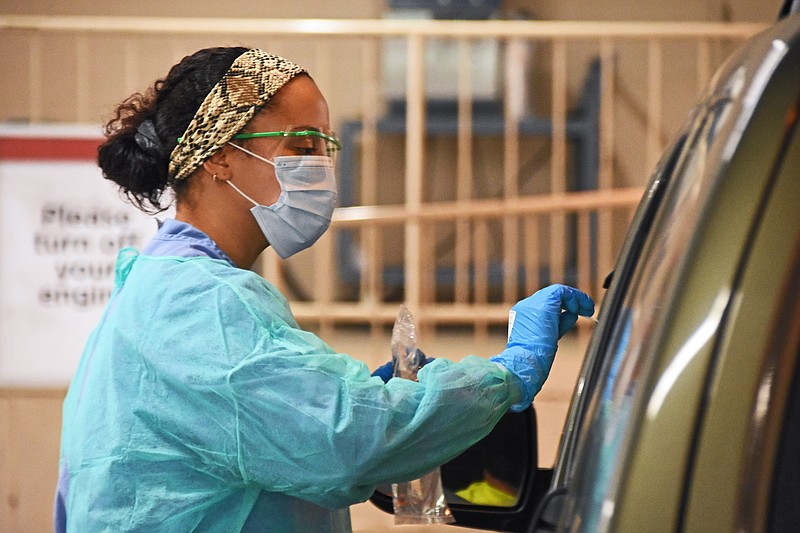Active cases of covid-19 in Arkansas more than doubled in the last 8 days after the state repeatedly broke its new-case record.
The surge, driven by the omicron variant, has forced schools to consider masking requirements and virtual instruction and created high demand for testing.
Back up: exactly how many cases have been reported in the last week or so?
Thousands of cases have been reported each day for more than a week. The highest single-day increase occurred Wednesday, when there were 10,974 new cases. That broke the previous record set Jan. 7 of 8,434 cases, which itself was the fourth record set in a row last week.
As for active cases, on Jan. 4 there were 32,280. On Wednesday, eight days later, the state had 71,134 active cases.
There has been great demand for tests, and the state has purchased 1.5 million at-home tests. They have not all arrived, but they are being distributed for free at local libraries and health units as they come in.
Go here to read more about where to find the tests and how to report at-home results to the state Health Department.
How do these case counts compare to past surges?
There have been several surges so far in the pandemic. The two largest prior to the emergence of omicron were in January 2021, following a holiday season when very few were vaccinated, and August 2021, when the delta variant began to dominate.
At the height of the January 2021 surge, there were 27,822 active cases. At the height of the August 2021 surge, there were 25,721 active cases. Those peaks are less than half the current number of active cases.
What’s going on with hospitalizations?
Hospitalizations are climbing, but they have not surpassed the peak number of patients hospitalized during either the January 2021 surge or the August 2021 surge. Hospitalizations have tended to peak a week or two after case counts peak. That means the peak in hospitalizations for this surge has likely not happened yet.
Although some current infections are among vaccinated people who are unlikely to be hospitalized, there are still concerns about hospital capacity. Legislators this week approved using $50.1 million from federal coronavirus aid to open 265 beds at 11 hospitals across the state.
What’s going on with schools?
Some districts around the state have dealt with teacher and staff shortages related to omicron and have pivoted to virtual instruction or modified masking policies in response. Universities have also modified policies and practices due to the surge.
Go here to read more about what’s been happening at the state’s schools and colleges, from reporters Cynthia Howell and Jaime Adame.
You can also read more about the latest case numbers from reporter Andy Davis and go here to read the governor’s comments from his weekly news conference.
